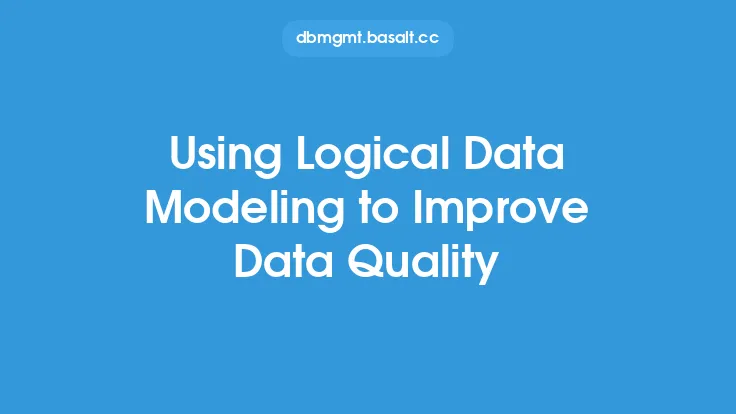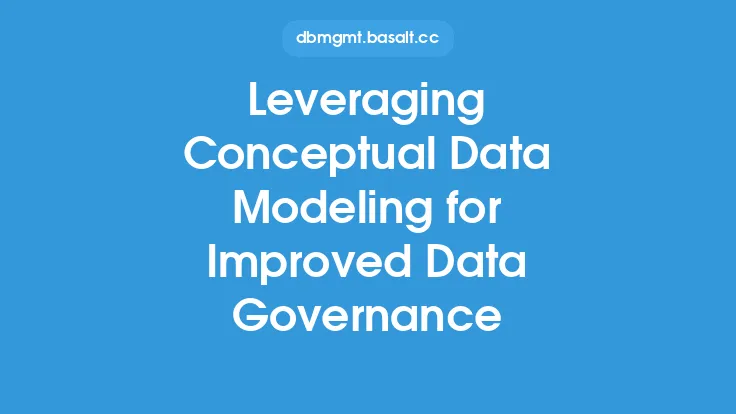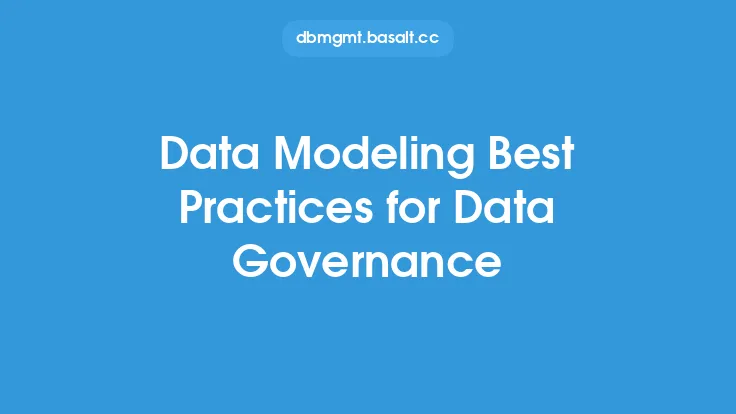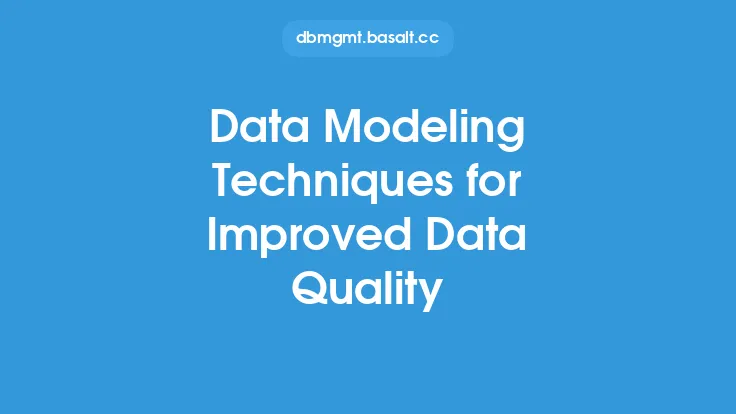Data governance is a critical aspect of any organization's data management strategy, as it ensures that data is accurate, reliable, and secure. One of the key techniques used to improve data governance is data modeling. Data modeling involves creating a conceptual representation of an organization's data assets, which helps to identify relationships, dependencies, and inconsistencies in the data. By using data modeling techniques, organizations can improve the quality, integrity, and security of their data, which in turn enables better decision-making and improved business outcomes.
Introduction to Data Modeling
Data modeling is a process that involves creating a visual representation of an organization's data assets, including entities, attributes, and relationships. This visual representation is often referred to as a data model. Data models can be used to communicate the structure and meaning of data to stakeholders, including business users, data analysts, and IT professionals. There are several types of data models, including conceptual, logical, and physical data models. Conceptual data models provide a high-level view of the data, while logical data models provide a more detailed view of the data structures and relationships. Physical data models, on the other hand, provide a detailed view of the data storage and retrieval mechanisms.
Benefits of Data Modeling for Data Governance
Data modeling provides several benefits for data governance, including improved data quality, data integrity, and data security. By creating a conceptual representation of an organization's data assets, data modeling helps to identify inconsistencies and errors in the data, which can be corrected to improve data quality. Data modeling also helps to identify relationships and dependencies between data entities, which can be used to improve data integrity. Additionally, data modeling can be used to identify potential security risks and vulnerabilities in the data, which can be mitigated to improve data security.
Data Modeling Techniques for Data Governance
There are several data modeling techniques that can be used to improve data governance, including entity-relationship modeling, object-role modeling, and dimensional modeling. Entity-relationship modeling is a technique that involves creating a conceptual representation of an organization's data assets, including entities, attributes, and relationships. Object-role modeling is a technique that involves creating a conceptual representation of an organization's data assets, including objects, roles, and relationships. Dimensional modeling is a technique that involves creating a conceptual representation of an organization's data assets, including facts, dimensions, and measures.
Best Practices for Data Modeling
There are several best practices that should be followed when using data modeling techniques to improve data governance. These best practices include involving stakeholders in the data modeling process, using standardized data modeling notation, and regularly reviewing and updating the data model. Involving stakeholders in the data modeling process helps to ensure that the data model is accurate and relevant to the business. Using standardized data modeling notation helps to ensure that the data model is consistent and easy to understand. Regularly reviewing and updating the data model helps to ensure that the data model remains relevant and accurate over time.
Tools and Technologies for Data Modeling
There are several tools and technologies that can be used to support data modeling, including data modeling software, data governance platforms, and data quality tools. Data modeling software provides a range of features and functionality to support the data modeling process, including data modeling notation, data modeling templates, and data modeling collaboration tools. Data governance platforms provide a range of features and functionality to support data governance, including data quality monitoring, data security monitoring, and data compliance monitoring. Data quality tools provide a range of features and functionality to support data quality, including data profiling, data validation, and data cleansing.
Challenges and Limitations of Data Modeling
There are several challenges and limitations of using data modeling techniques to improve data governance, including the complexity of the data, the lack of standardization, and the limited resources. The complexity of the data can make it difficult to create an accurate and relevant data model. The lack of standardization can make it difficult to compare and contrast different data models. The limited resources can make it difficult to dedicate the time and effort required to create and maintain a high-quality data model.
Future of Data Modeling for Data Governance
The future of data modeling for data governance is likely to involve the increased use of automation and artificial intelligence. Automation can be used to support the data modeling process, including data discovery, data profiling, and data modeling. Artificial intelligence can be used to support the data governance process, including data quality monitoring, data security monitoring, and data compliance monitoring. Additionally, the increased use of cloud-based data platforms and big data technologies is likely to require new and innovative data modeling techniques and approaches.
Conclusion
In conclusion, data modeling is a critical technique for improving data governance. By creating a conceptual representation of an organization's data assets, data modeling helps to identify relationships, dependencies, and inconsistencies in the data. This can be used to improve data quality, data integrity, and data security, which in turn enables better decision-making and improved business outcomes. By following best practices, using the right tools and technologies, and addressing the challenges and limitations, organizations can get the most out of data modeling and improve their overall data governance capabilities. As data continues to play an increasingly important role in business decision-making, the importance of data modeling for data governance is likely to continue to grow.





